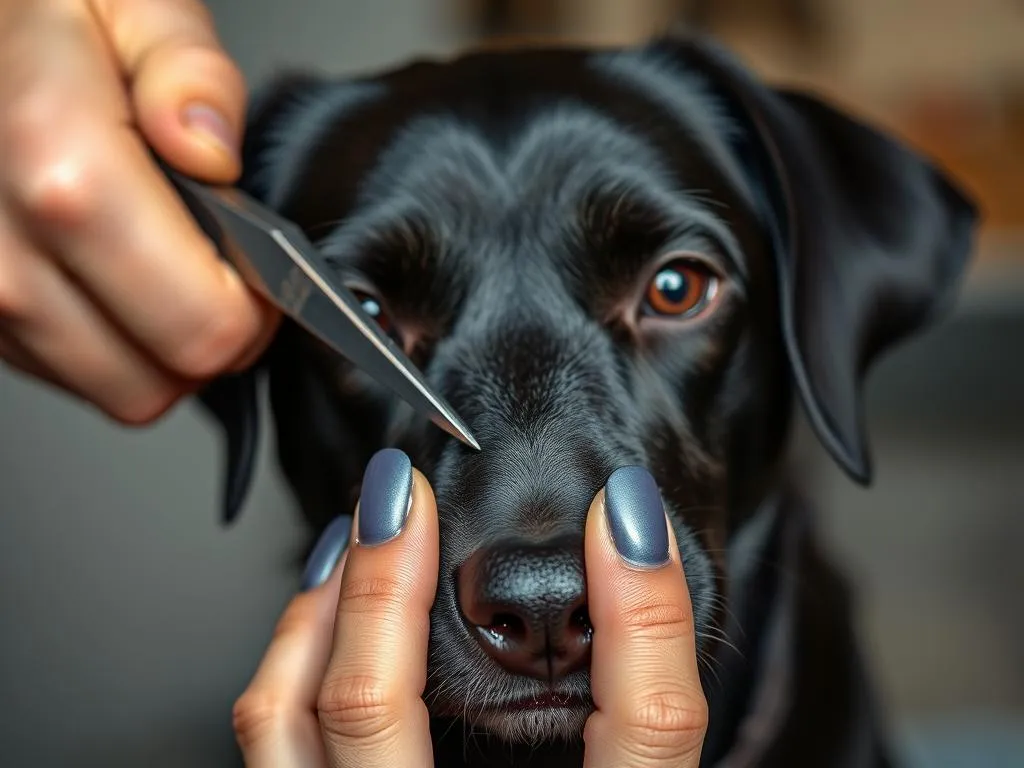
Introduction
Caring for your dog’s nails is an essential aspect of their overall health care. Regular nail trimming prevents discomfort and potential injuries caused by overgrown nails. However, for many dog owners, how to cut black dog nails poses a unique challenge. Unlike white nails, where the quick is visibly pink, black nails can make the process more daunting due to the difficulty in identifying the quick.
Understanding the significance of regular nail trimming and mastering the techniques for safely cutting black dog nails can help ensure your furry friend remains comfortable and healthy. This article will cover the anatomy of dog nails, common nail issues, preparation tips, step-by-step guidance on trimming, and aftercare.
Understanding Dog Nails
Anatomy of Dog Nails
Dog nails consist of three primary parts: the outer shell, the quick, and the nail bed. The outer shell is the hard casing that protects the inner structures, while the quick is a sensitive area containing nerves and blood vessels. The nail bed supports the nail’s growth.
The color of a dog’s nails varies, with some dogs having white nails and others having black. This difference affects how easily you can see the quick. With white nails, the quick is often visible as a pink line, while black nails can obscure this critical indicator, making it challenging to determine where to cut.
Common Nail Issues
Over time, dogs may face several nail-related problems:
- Ingrown Nails: This occurs when the nail grows into the paw pad, leading to pain and infection.
- Split or Broken Nails: Active dogs may experience split or broken nails, which can be painful and lead to bleeding.
- Overgrown Nails: Nails that are too long can cause discomfort while walking and may lead to joint issues or injuries.
Understanding these issues can help you prioritize nail care and take preventive measures.
Preparing for Nail Cutting
Tools Needed
Before you start trimming, gather the necessary tools:
- Nail Clippers: There are different types suitable for various preferences:
- Scissor Clippers: Good for larger dogs with thicker nails.
- Guillotine Clippers: Ideal for small to medium-sized dogs, allowing for precision.
-
Electric Grinders: Useful for smoothing nails after cutting, especially for dogs that don’t mind noise.
-
Styptic Powder or Cornstarch: Essential for stopping bleeding if you accidentally cut into the quick.
-
Optional: Treats and calming aids can help create a positive association with nail trimming.
Creating a Comfortable Environment
A calm and quiet environment is crucial for a successful nail trimming session. Here’s how to set the stage:
- Choose the Right Time: Trim nails when your dog is relaxed, such as after a walk or playtime.
- Calming Techniques: Use gentle petting, soothing voices, and treats to relax your dog before the trimming begins.
Creating a positive atmosphere can significantly enhance the experience for both you and your dog.
Techniques for Cutting Black Dog Nails
Identifying the Quick
Identifying the quick in black nails can be challenging but is vital to prevent cutting too deep. Here are some tips to help:
- Look for Changes in Color: Sometimes, you can see a slight color change in the nail as you approach the quick. It may appear darker or more opaque.
- Check the Nail’s Shape: If you look closely, the nail will usually widen slightly where the quick is located.
Understanding these cues is crucial for a safe trimming experience.
Step-by-Step Nail Trimming Guide
Positioning Your Dog
Finding the right position for your dog is essential. For small dogs, you can hold them in your lap or place them on a table. Larger dogs may be more comfortable standing or lying down. Ensure your dog feels secure to minimize movement during trimming.
Trimming Process
– Trim Small Amounts: Start with small cuts to avoid hitting the quick. A good rule of thumb is to cut just the tip of the nail.
– Signs of Cutting Too Close: If you see a dark spot in the center of the nail or if your dog flinches, stop immediately.
Handling Quick Cuts
Accidents happen, and if you accidentally cut the quick:
- First Aid Steps: Apply styptic powder or cornstarch to the area to stop the bleeding. Apply gentle pressure for a minute or two.
- Consult a Veterinarian: If the bleeding doesn’t stop or if your dog seems in severe pain, it’s best to consult a veterinarian.
Tips for Successful Nail Trimming
- Frequency of Nail Trimming: Depending on your dog’s activity level, nails should be trimmed every 3-6 weeks. Dogs that walk on hard surfaces may wear down their nails naturally.
- Positive Reinforcement: Use treats and praise to reward your dog during and after the trimming process to create a positive experience.
- Alternatives for Resistant Dogs: If your dog resists nail trimming, consider alternatives like taking them to a professional groomer or using calming aids.
Post-Trimming Care
Aftercare for Your Dog’s Nails
After trimming, it’s essential to check your dog’s nails carefully:
- Look for Bleeding or Discomfort: Ensure that there are no signs of bleeding or pain. Monitor your dog for signs of discomfort, such as limping or licking their paws.
- Clean Up: Collect nail clippings and debris to keep your space tidy.
Monitoring Nail Health
Regularly check your dog’s nails for any signs that may indicate a need for more frequent trimming:
- Signs of Overgrowth: If you hear clicking sounds on hard floors or if your dog’s nails touch the ground when standing, it may be time for a trim.
- Routine Check-Ups: Incorporate nail checks into your regular grooming routine to ensure they stay healthy.
Conclusion
Regular nail trimming is crucial for your dog’s health, comfort, and overall well-being. While how to cut black dog nails may seem challenging, with the right tools, techniques, and a little patience, you can master this essential grooming task. Developing a routine and practicing these techniques will ensure your furry friend stays happy and healthy.
Remember to remain calm and positive during the process, as your dog will pick up on your demeanor. With time and practice, both you and your dog can enjoy this grooming experience together.









